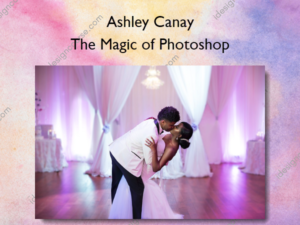Working with Natural Light – Charlotte Reeves
$197.00 Original price was: $197.00.$89.00Current price is: $89.00.
»Delivery: Within 7 days
Description
 Working with Natural Light Information
Working with Natural Light Information
Do you really see the light?
Or do you spend more time concentrating on your furry subjects?
Hi, Charlotte here! 👋
As pet photographers, we have a ridiculous number of things to think about at outdoor photo sessions. Connecting with the dog and managing their energy, chatting with the owner, deciding on lenses and camera settings, and trying to work out the best possible angle to get that iconic shot, perfect for a huge piece of wall art for your client’s wall.
If you’re like most pet photographers, your attention is fully occupied with all these other things, so you could be forgiven for not always choosing the best option when it comes to lighting.
But – what if reading the light came naturally and automatically – as easy as breathing?
What if reading and using the available light was something that was just intuitive?
What if you could let the light guide how the session runs?
Imagine instantly being able to select the ideal spot for your subject where the light is perfect.
Imagine knowing exactly what to do when the light changes unexpectedly.
Imagine always understanding what adjustments to make to continue to shoot with beautiful, even, stunning lighting.
Start with this course!
This is the most helpful and important learning resource offered by Unleashed Education. Out of all of our courses, I always recommend people complete this one first.
Working with Natural Light will help you establish a solid base that will support the rest of your pet photography learning for years to come.
It’s essential knowledge for any kind of photographer who shoots with natural light, but even better, it’s presented specifically with pets in mind. You know, those fast moving little creatures available in all kinds of colours, patterns, shapes, sizes and textures.
Although light is universal, working with pets does change some aspects of how you use the light, and move through the session, while shooting in natural light.
What You’ll Learn In Working with Natural Light?
Part 1 – Characteristics of Natural Light
First, we’ll look at the characteristics of natural light – these are the building blocks, or the main ingredients of light that give various types of light their unique look.
Understand the underlying properties of those ingredients is essential. Sometimes you’re stuck with working with a specific ingredient – for example – flat light on a cloudy day. But if you know how you get the most out of it, it’s not going to be a problem. We’ll also talk about light sources, how the light is modified by the atmosphere and the surroundings, and the huge impact this has on the appearance of the subject.
Part 2 – Types of Natural Light
Once we’ve covered the various characteristics of light, we start thinking about how those characteristics combine to give us specific types of natural light. I’ll also share some tips on how you can work with the various types of light to get the best possible images.
You’ll learn how to find the best light when working indoors, how to get stunning images every time in full sun and how to utilise all the good aspects of cloudy and shade light for beautiful, soft even lighting. We also delve deep into some fun types of light including backlighting, silhouettes and twilight.
Part 3 – Working with Natural Light
This is where it all starts to come together! First I’ll share some handy hints covering session timing, shooting action and dealing with flare – ensuring you have all the tools you need in your toolkit to put all that new knowledge into practice.
Then we’ll dive into my favourite part of the course – Light Stories! These are stories of real life pet photography sessions where I share how I worked with the light throughout the session. With example images, I explain how the light helped define the look and direction of the session – helping me decide where to shoot, how to shoot and how to expose for the lighting and the scene perfectly.
More courses from the same author: Charlotte Reeves
Delivery Policy
When will I receive my course?
You will receive a link to download your course immediately or within 1 to 21 days. It depends on the product you buy, so please read the short description of the product carefully before making a purchase.
How is my course delivered?
We share courses through Google Drive, so once your order is complete, you'll receive an invitation to view the course in your email.
To avoid any delay in delivery, please provide a Google mail and enter your email address correctly in the Checkout Page.
In case you submit a wrong email address, please contact us to resend the course to the correct email.
How do I check status of my order?
Please log in to iDesignCourse account then go to Order Page. You will find all your orders includes number, date, status and total price.
If the status is Processing: Your course is being uploaded. Please be patient and wait for us to complete your order. If your order has multiple courses and one of them has not been updated with the download link, the status of the order is also Processing.
If the status is Completed: Your course is ready for immediate download. Click "VIEW" to view details and download the course.
Where can I find my course?
Once your order is complete, a link to download the course will automatically be sent to your email.
You can also get the download link by logging into your iDesignCourse account then going to Downloads Page.










